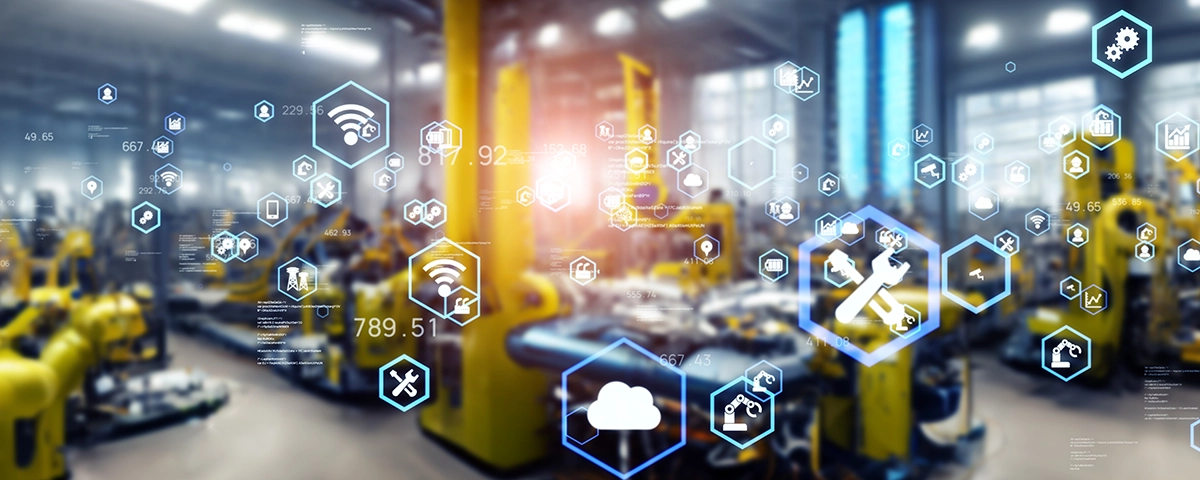Manufacturing is rapidly evolving into smart manufacturing, as organisations adopt advanced technologies to optimise their processes and increase efficiency. The integration of technologies such as artificial intelligence, robotics, and the Internet of Things (IoT) has enabled manufacturers to collect, analyse, and act upon data in real-time, improving decision-making and enhancing the overall manufacturing experience.
Smart manufacturing has transformed the way organisations operate, enabling them to improve quality, reduce downtime, increase productivity, and respond quickly to changing market demands. As the manufacturing industry continues to evolve and adopt new technologies, the shift towards smart manufacturing is expected to accelerate, with organisations striving to remain competitive in an increasingly digital world.
Edge computing is at the heart of this digital transformation, as it enables real-time data analysis and reduces latency, leading to improved efficiency and productivity. By processing data at the edge of the network, closer to where the data is being generated, manufacturers can quickly identify and resolve issues as they occur, improving decision-making and enhancing the overall manufacturing experience.
Let’s take a closer look at how edge computing is impacting the manufacturing industry in practice.
Quality control – precision monitoring. Digital transformation requires seamless communication between processes, machines and systems in order to adapt the whole manufacturing process as it occurs. Such real-time involvement is only possible with the collection, sorting and actioning of huge amounts of data. Edge computing overcomes the cost and latency challenges, dealing with data at source and, using technology, such as AI (artificial intelligence) and ML (machine learning), to determine the necessary actions to be taken.
Augmented Reality (AR) and Virtual Reality (VR). Embracing these technologies is a vital element of industry 4.0. Whether this is in the form of training staff using AR/VR, helping maintenance workers carry out repairs with remote expertise, health and safety needs or quality inspections, edge computing is revolutionising the practicalities. In situ data processing removes the tiny lags that have historically been a sticking point. Even less than 100 milliseconds of delay cause issues, such as motion sickness and nausea in users wearing headsets, something that edge processing overcomes.
Predictive asset maintenance. One of the greatest manufacturing headaches is accurately defining equipment Mean Time Between Failures (MTBF). Inspections and maintenance have historically required asset shut down and all the associated costs this brings. Being able to accurately predict when maintenance and repair are needed removes the need for unnecessary downtime, either from just-in-case inspections or unexpected breakdowns. However, this process involves the measurement of many variables and elements. The large amount of data generated can’t realistically be transported to the cloud due to the sheer volume and costs to do so. However, edge computing overcomes these issues, bringing true predictive maintenance into the mix, driving down costs and upgrading production.

Manufacturing as a service. Remote asset monitoring brings further opportunities, such as providing services to customers that are as dynamic as their needs. Edge computing will play a pivotal role, not only from a data sorting and latency point of view but also surrounding security issues, 5G compliance, speed of site set up and sharing models where multiple parties are sharing a single facility. Manufacturers will also be able to monitor equipment remotely, providing opportunities to increase revenue through diversification. Rather than a one-off sale to a customer, assets can be provided as a managed service with all relevant maintenance included. This is advantageous to both the asset owner and the customer, increasing flexibility and reducing many of the upfront costs when manufacturing at scale.
Edge computing comes in many guises, with near, mid and far edge servers all set to play a role. For instance, installing on-site micro data centres or containerised data centres is viable and cost-effective. Scalable as needed, such a solution can be increased as data needs demand.
Edge computing needs in manufacturing are set to dramatically increase over the next decade. Both new plant implementation and existing facility integration will drive the change.
Contact us today to find out how our cutting-edge range can benefit your manufacturing operation.






